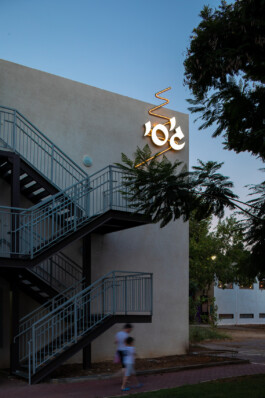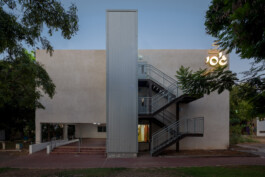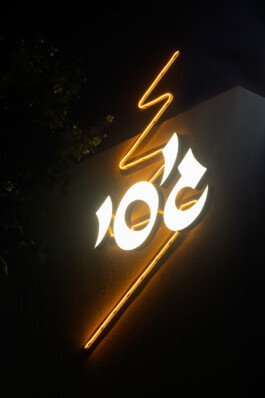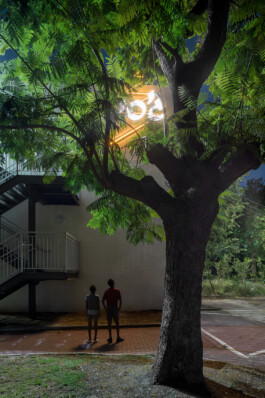2019
A permanent light installation at the Center for Digital Art, Holon, which commissioned the piece as a part of "Murals," a group exhibition on the subject of public artworks on walls. The project was curated by Udi Edelman.
The Center for Digital Art operates in the Jessy Cohen neighborhood of Holon, built in the early 1950s with funds donated by American-Jewish philanthropists Max and Jessica Cohen. Their vision was to provide public housing solutions for new immigrants who arrived in Israel from Eastern Europe and the Arab states. Locally called simply Jessy, the neighborhood was known for its high crime rate in the ’80s and ’90s, and today, it is still struggling with the stigma around its safety. The light sign "Jessy" (written in Hebrew letters) references the local community, suggesting a bright new future.
Aluminum, metal, plexiglass, LED lights
348x206x20 cm
Documentation: Tal Nisim




Alona Rodeh, Public Art, Light Art, Center for Digital Art, CDA Holon, Art in Public Space, Light Installation
2019
A permanent light installation at the Center for Digital Art, Holon, which commissioned the piece as a part of "Murals," a group exhibition on the subject of public artworks on walls. The project was curated by Udi Edelman.
The Center for Digital Art operates in the Jessy Cohen neighborhood of Holon, built in the early 1950s with funds donated by American-Jewish philanthropists Max and Jessica Cohen. Their vision was to provide public housing solutions for new immigrants who arrived in Israel from Eastern Europe and the Arab states. Locally called simply Jessy, the neighborhood was known for its high crime rate in the ’80s and ’90s, and today, it is still struggling with the stigma around its safety. The light sign "Jessy" (written in Hebrew letters) references the local community, suggesting a bright new future.
Aluminum, metal, plexiglass, LED lights
348x206x20 cm
Documentation: Tal Nisim



